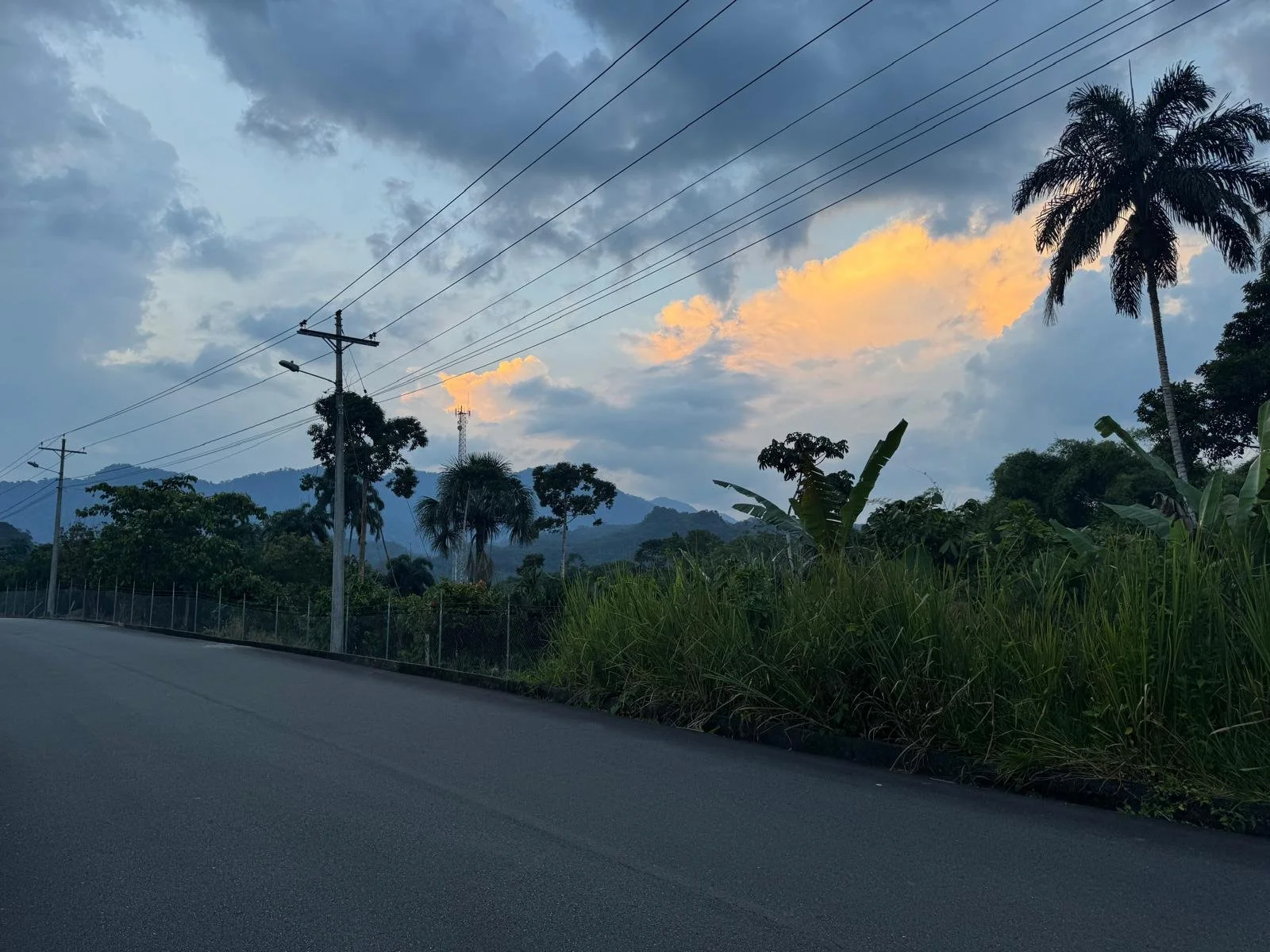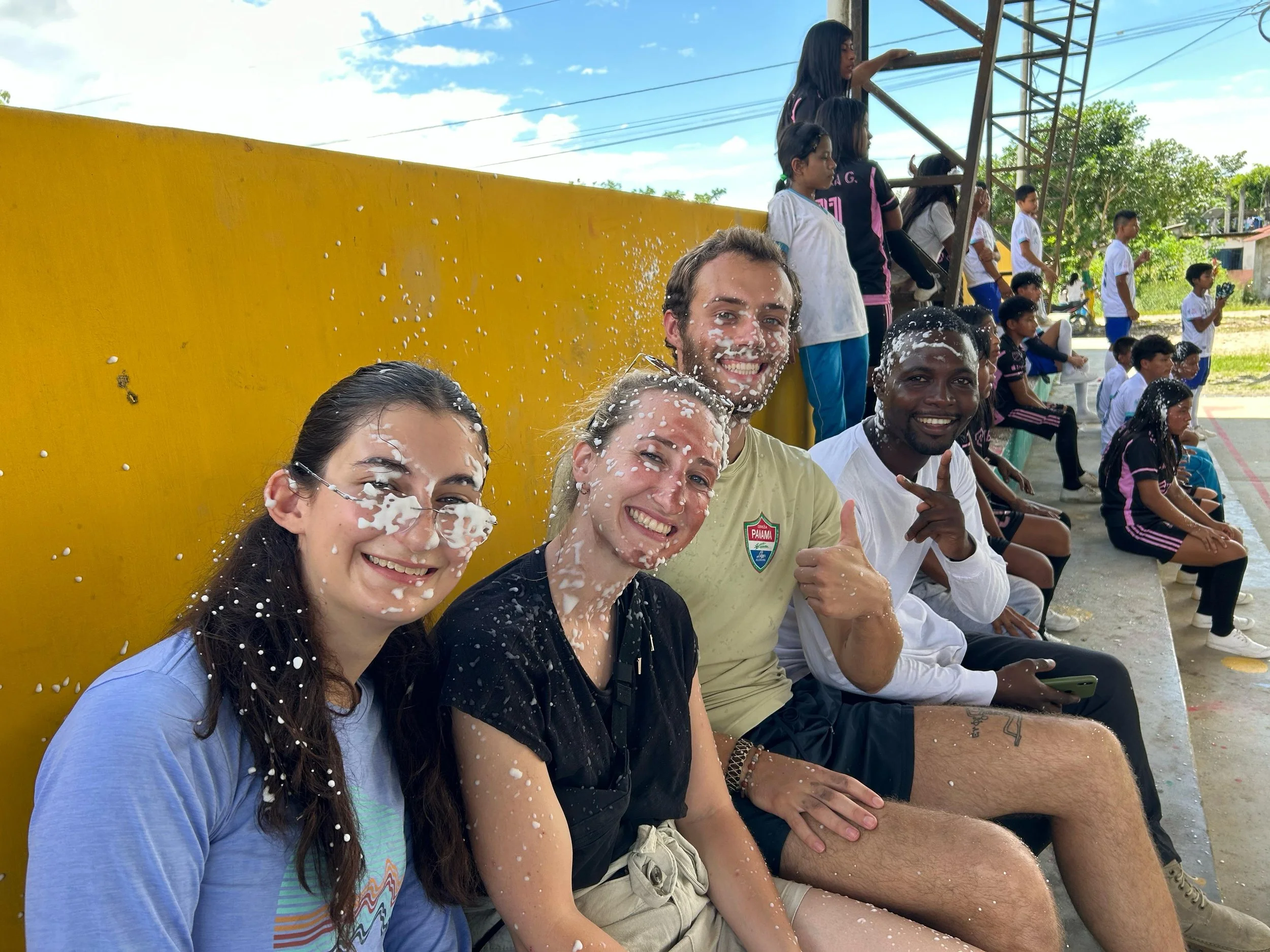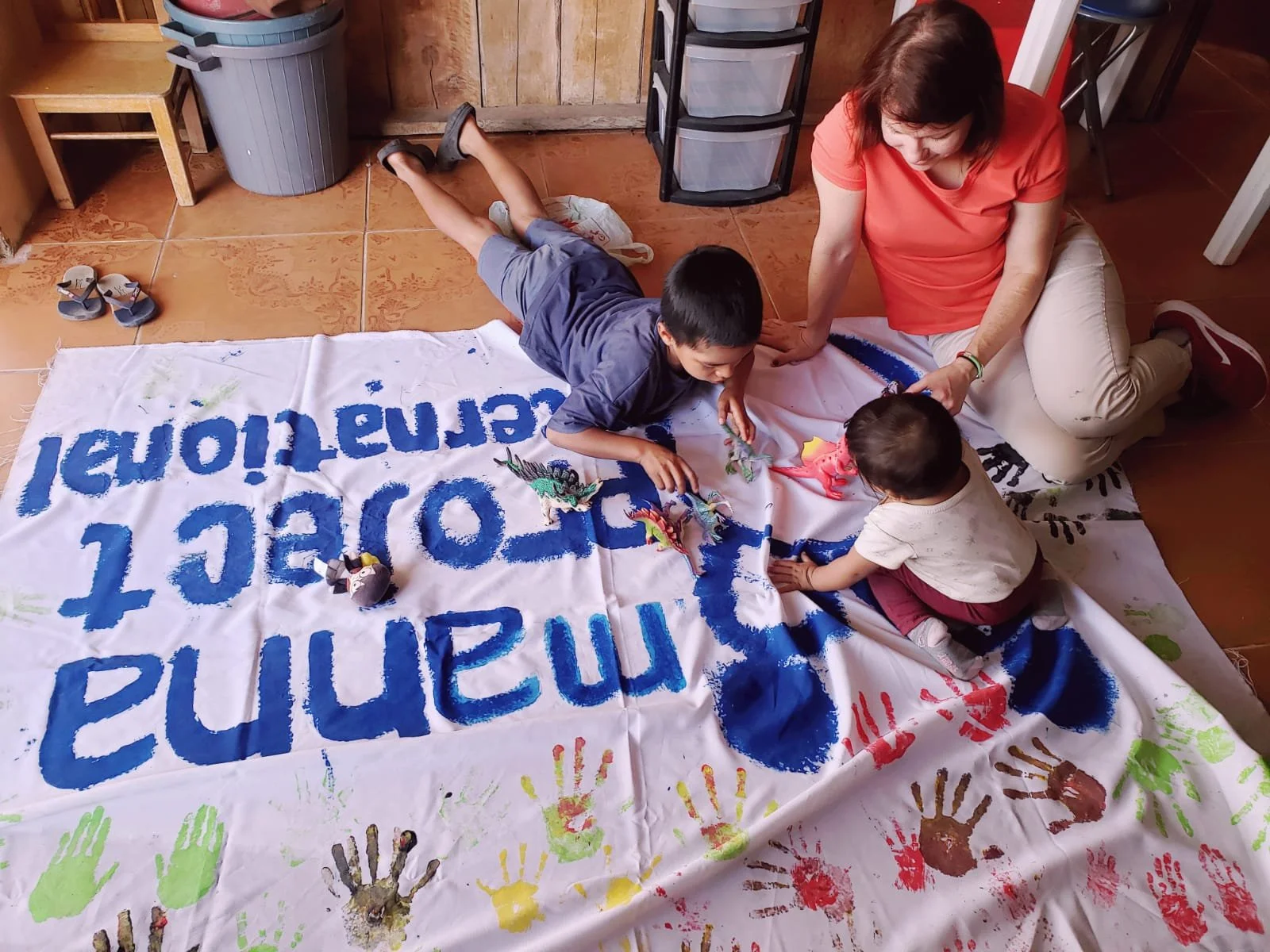This past weekend, MPI Ecuador hosted its annual Hornado Solidario in Rumiloma. What’s that, you ask? No need to be ashamed. Just a few weeks ago I, too was an hornado newbie. The quick answer to your question is: a lunch fundraiser with traditional Ecuadorian food. But don’t get it twisted; this ain’t your typical Firehouse Pancake Breakfast fundraiser. A LOT more goes into an hornado than you’d think. What follows below is an explanation of everything that required for a successful Hornado.
1. The Hornado
Hornado, a signature of Ecuadorian cuisine, refers to a full, roast pig. And I mean full: head and all. It is to be cooked by a skilled Ecuadorian person (usually a grandmother) and to be served by a skilled Ecuadorian person (usually a grandmother), who has no qualms about ripping off pieces of meat with her hands to serve on plates during the event (see Clemencia below). If you’re lucky, your hornado will come decorated, like ours.
2. Las Tortillas de Papa (the potatoes)
We bought 200 pounds of potatoes for our Hornado. For sizing help, 200 pounds of potatoes is enough to fill 3 large garbage cans. We enlisted the help of our adult English students to help us peel all of them… and were able to finish in less than 2 hours! We outsourced the boiling and mashing of the potatoes to another skilled Ecuadorian señora, so all that was left to do was to take the 3 garbage cans of mashed potatoes and make them into patties by hand to be fried on the day of the Hornado. Luckily patty-making is grunt work and doesn’t require Ecuadorian skill (so most PDs and local volunteers were put on patty duty). The frying of the potatoes, however, was spearheaded by Clemencia’s sister, Blanca.
3. Mote
It’s a rule that a balanced Ecuadorian plate must contain at least two types of starches. Simply putting a serving of white rice, corn, verdes (bananas) or potatoes is not sufficient. You’ve gotta have a combination of them. Mote is type of corn kernel (much bigger than those that we’re used to in the US) that fits the bill for the second starch of the plate. It is boiled and cooked before serving.
4. Salad
We must have chopped at least 8 heads of lettuce, 50 tomatoes and 30 onions for the salad. Agrio, or salad dressing, is made from tomatoes, onions, limes, cilantro and brown sugar loaf. As another sizing estimate, we had enough agrio to fill a medium-sized garbage can!
5. Great Company!
We served about 300 plates at the Hornado Solidario, before we began running out of food. We raffled off some prizes that were donated to us, sang karaoke, painted kids’ faces and had a mini bake sale. None of it would have been possible without the beautiful weather and all the help from community volunteers. Below are just a few pictures of the great day we shared.
You can also contribute to the fundraising efforts of our Ecuador community by donating here! Type "Hornado" in the comments section.
























